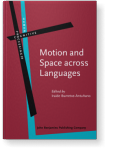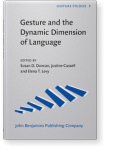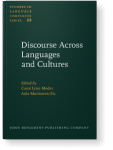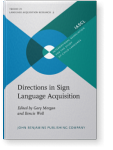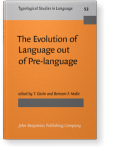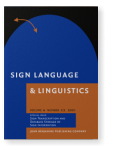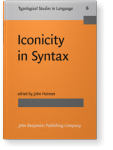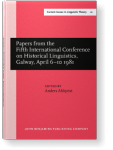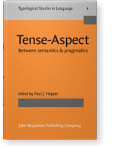Dan I. Slobin
List of John Benjamins publications for which Dan I. Slobin plays a role.
Book series
Journal
Title
Studies in Turkish Linguistics
Edited by Dan I. Slobin and Karl Zimmer
[Typological Studies in Language, 8] 1986. vi, 300 pp.
Subjects Altaic languages | Language acquisition | Semantics | Syntax | Typology
2017 Afterword. Typologies and language use Motion and Space across Languages: Theory and applications, Ibarretxe-Antuñano, Iraide (ed.), pp. 419–446 | Chapter
The study of encoding of motion events is best approached as a search for potentially interacting factors, linguistic and non-linguistic. Every language presents a cluster of typological variables. In the domain of motion events, sets of variables co-occur in at least two major patterns (verb‑ and… read more
2017 Chapter 1. Social motivations for linguistic exploration: A diary study Social Environment and Cognition in Language Development: Studies in honor of Ayhan Aksu-Koç, Ketrez, F. Nihan, Aylin C. Küntay, Şeyda Özçalışkan and Aslı Özyürek (eds.), pp. 3–18 | Chapter
The language-learning child is challenged to determine why there are alternate ways of expressing content, performing speech acts, and directing attention to inner states. Acquisition of syntax is driven by social cognition and by attention to linguistic constructions. This chapter presents an… read more
2016 Thinking for speaking and the construction of evidentiality in language contact Exploring the Turkish Linguistic Landscape: Essays in honor of Eser Erguvanlı-Taylan, Güven, Mine, Didar Akar, Balkız Öztürk and Meltem Kelepir (eds.), pp. 105–120 | Article
Long-term habitual use of two languages can have consequences for mappings between form and content in one or the other of the languages. In processes of thinking for speaking, speakers attend to dimensions of experience that are available for morphosyntactic and lexical coding. In situations of… read more
2014 From speech with others to speech for self: A case study of “externalized drama” Language in Interaction: Studies in honor of Eve V. Clark, Arnon, Inbal, Marisa Casillas, Chigusa Kurumada and Bruno Estigarribia (eds.), pp. 315–332 | Article
The chapter is a case study of a particular kind of speech-for-self produced by a preschool-aged girl, characterized as “externalized dramas.” Unlike most such records of vocalized thought, this speech is not involved with guiding ongoing behavior, but rather with acting out problems of… read more
2013 Typology and channel of communication: Where do signed languages fit in Language Typology and Historical Contingency: In honor of Johanna Nichols, Bickel, Balthasar, Lenore A. Grenoble, David A. Peterson and Alan Timberlake (eds.), pp. 47–68 | Article
Many sign languages have been described linguistically; however, such descriptions draw on grammatical traditions developed for the surrounding spoken languages. Although these languages are spoken all over the world, they all happen to be dependent marking, in terms of the typology developed by… read more
2007 4 From Gestures to Signs in the Acquisition of Sign Language Gesture and the Dynamic Dimension of Language: Essays in honor of David McNeill, Duncan, Susan D., Justine Cassell and Elena T. Levy (eds.), pp. 51–65 | Chapter
2006 What makes manner of motion salient? Explorations in linguistic typology, discourse, and cognition Space in Languages: Linguistic Systems and Cognitive Categories, Hickmann, Maya † and Stéphane Robert (eds.), pp. 59–81 | Article
2005 Linguistic representations of motion events: What is signifier and what is signified? Outside-In — Inside-Out, Maeder, Costantino, Olga Fischer and William J. Herlofsky (eds.), pp. 307–322 | Article
2004 How people move: Discourse effects of linguistic typology Discourse Across Languages and Cultures, Moder, Carol Lynn and Aida Martinovic-Zic (eds.), pp. 195–210 | Article
2002 Transcription as a tool for understanding: The Berkeley Transcription System for sign language research (BTS) Directions in Sign Language Acquisition, Morgan, Gary and Bencie Woll (eds.), pp. 55–75 | Article
2002 15. Language evolution, acquisition, diachrony: Probing the parallels The Evolution of Language out of Pre-language, Givón, T. and Bertram F. Malle (eds.), pp. 375–392 | Chapter
2001 Sign language transcription at the level of meaning components: The Berkeley Transcription System (BTS) Sign Transcription and Database Storage of Sign Information, Bergman, Brita, Penny Boyes Braem, Thomas Hanke and Elena Antinoro Pizzuto (eds.), pp. 63–104 | Article
The Berkeley Transcription System (BTS) has been designed for the transcription of sign language videotapes at the level of meaning components. The system is based on efforts to transcribe adult-child interactions in American Sign Language (ASL) and Sign Language of the Netherlands (SLN). The goal… read more
2000 Verbalized events: A dynamic approach to linguistic relativity and determinism Evidence for Linguistic Relativity, Niemeier, Susanne and René Dirven † (eds.), pp. 107–138 | Article
1997 Mind, Code and Text Essays on Language Function and Language Type: Dedicated to T. Givón, Bybee, Joan L., John Haiman and Sandra A. Thompson (eds.), pp. 437–468 | Article
1994 Discourse origins of the present perfect Perspectives on Grammaticalization, Pagliuca, William (ed.), pp. 119–133 | Article
1991 Learning to think for speaking: Native language, cognition, and rhetorical style Pragmatics 1:1, pp. 7–25 | Article
1986 The acquisition and use of Relative Clauses in Turkic and Indo-European Languages Studies in Turkish Linguistics, Slobin, Dan I. and Karl Zimmer (eds.), pp. 273–294 | Article
1986 Introduction Studies in Turkish Linguistics, Slobin, Dan I. and Karl Zimmer (eds.), pp. 1–6 | Miscellaneous
1985 The Child as a linguistic icon-maker Iconicity in Syntax: Proceedings of a symposium on iconicity in syntax, Stanford, June 24–26, 1983, Haiman, John (ed.), pp. 221–248 | Article
1982 Why small children cannot change language on their own: suggestions from the English past tense Papers from the Fifth International Conference on Historical Linguistics, Galway, April 6–10 1981, Ahlqvist, Anders (ed.), pp. 29–37 | Article
1982 Tense, Aspect and Modality in the Use of the Turkish Evidential Tense-Aspect: Between semantics & pragmatics, Hopper, Paul J. (ed.), pp. 185–200 | Article




